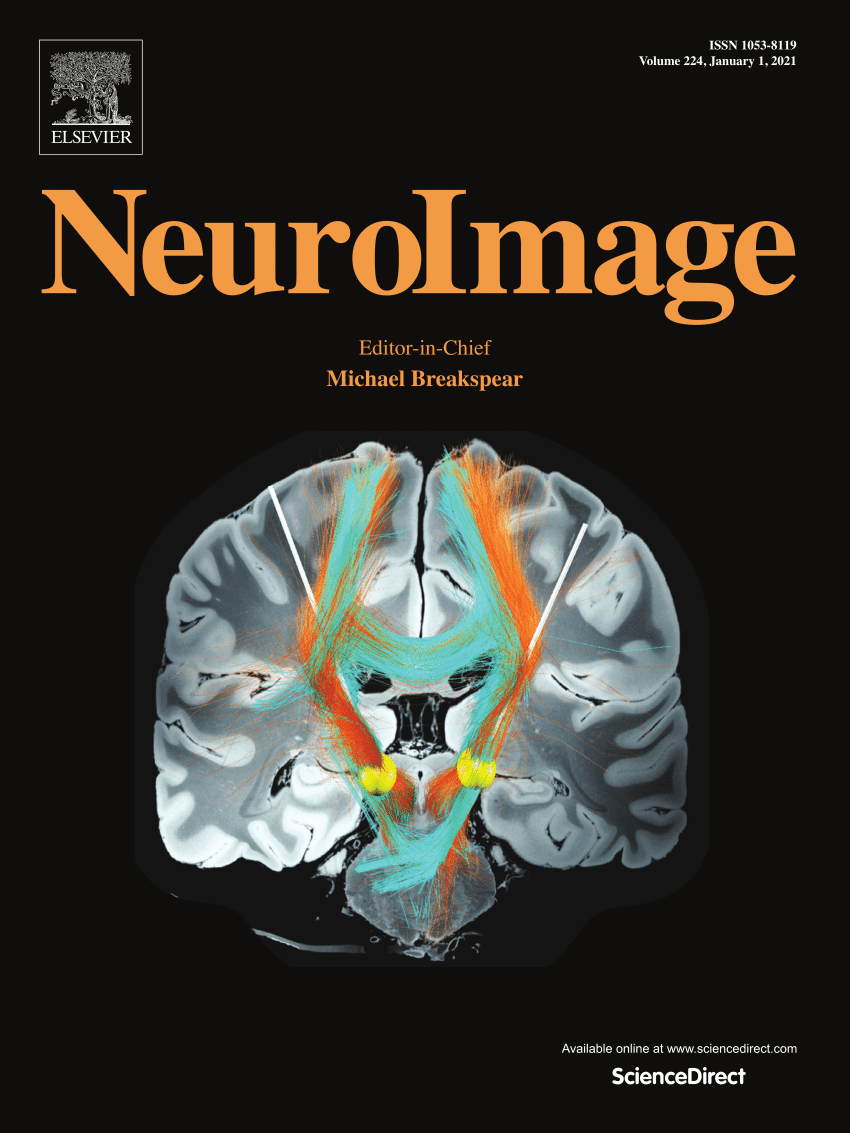耳鸣患者脑白质微结构变化高于灰质
IF 4.7
2区 医学
Q1 NEUROIMAGING
引用次数: 0
摘要
前言:探讨耳鸣患者脑白质和灰质的微结构变化及其对神经心理表现的影响。方法利用48例耳鸣患者和48例健康对照者的多壳扩散加权成像资料和神经心理学评价资料进行横断面研究。基于弥散张量成像(DTI)和神经突定向弥散和密度成像(NODDI)模型的白质和灰质微观结构特征,以及基于神经束空间统计(TBSS)和灰质空间统计(GBSS)的拓扑特性,均来自于研究对象的高级神经束成像模型。分析脑-神经-心理表现的相关性。结果腰痛患者表现为小钳与右侧皮质脊髓束轴向弥散性降低,小钳方向弥散性增加,右侧尾状核与骨膜外突、右侧尾状核与颞上叶、左侧壳核与楔叶连接强度降低。耳鸣患者的整体网络效率和局部网络效率显著低于耳鸣患者,馈线连接强度显著低于耳鸣患者。取向弥散值在耳鸣状态与造径测试B部分得分的关系中起中介作用。但脑灰质未见明显微结构变化。结论利用多壳DWI数据,本研究表明耳鸣患者更容易受到脑白质纤维断裂和内部连通性组织改变的影响,而不是灰质。这些白质的微观结构变化可能与耳鸣患者认知功能的变化有关。本文章由计算机程序翻译,如有差异,请以英文原文为准。
Predominant white matter microstructural changes over gray matter in tinnitus brain
Introduction
To explore microstructure changes across brain white matter and gray matter in tinnitus patients and its effect on neuropsychological performance.
Methods
The cross-sectional study used Multi-shell Diffusion Weighted Imaging data and neuropsychological assessment from 48 tinnitus patients and 48 healthy controls. Microstructural features across over white matter and gray matter based on Diffusion Tensor Imaging (DTI) and Neurite Orientation Dispersion and Density Imaging (NODDI) model using Tract-Based Spatial Statistics (TBSS) and Gray Matter-Based Spatial Statistics (GBSS), as well as topological properties were derived from an advanced tractography model in subjects. Brain-neuropsychological performance correlations were analyzed.
Results
Tinnitus patients showed decreased axial diffusivity in forceps minor and right corticospinal tract, increased orientation dispersion in forceps minor, decreased connection strength between the right caudate and pericalcarine, right caudate and superior temporal lobe, and left putamen and cuneus. Global network efficiency and local network efficiency were significantly less in tinnitus patients while feeder connection strength was significantly less in tinnitus patients. The orientation dispersion value mediated the relationship between tinnitus status and Trail Making Test–Part B scores. However, no obvious microstructural changes in gray matter were observed.
Conclusion
Leveraging multi-shell DWI data, the current study indicated that fiber disruption and internal connectivity organizational changes in brain white matter, rather than gray matter, were more susceptible in tinnitus patients. These microstructural changes in white matter could be associated with changes in cognitive function in tinnitus patients.
求助全文
通过发布文献求助,成功后即可免费获取论文全文。
去求助
来源期刊

NeuroImage
医学-核医学
CiteScore
11.30
自引率
10.50%
发文量
809
审稿时长
63 days
期刊介绍:
NeuroImage, a Journal of Brain Function provides a vehicle for communicating important advances in acquiring, analyzing, and modelling neuroimaging data and in applying these techniques to the study of structure-function and brain-behavior relationships. Though the emphasis is on the macroscopic level of human brain organization, meso-and microscopic neuroimaging across all species will be considered if informative for understanding the aforementioned relationships.
 求助内容:
求助内容: 应助结果提醒方式:
应助结果提醒方式:


